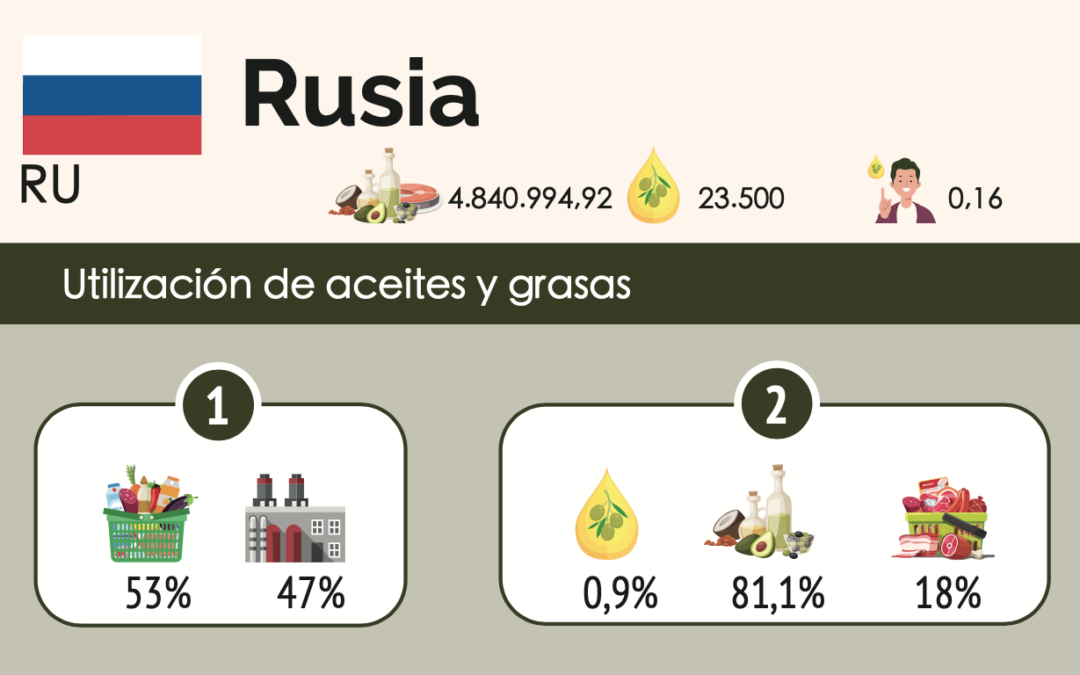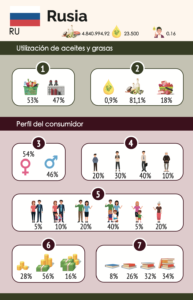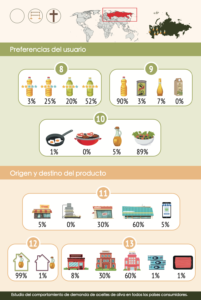Russia is a very important market for olive oil from Spain. The country is not an oil producer, so it depends on imports of this product. Spain and Italy provide the largest volumes of oil to Russia, but the largest market share belongs to Spain.
Russian individuals consume about 0.16 liters per person per year. This translates into a consumption of 23,500 liters per year. Of the total amount of oil consumed in Russia, 0.9% goes to olive oil.
As regards consumption by sex, it can be seen that women consume olive oil in greater proportion than men, accounting for 54% and 46% respectively. With respect to age, people between 50 and 65 years of age consume the highest percentage of olive oil, with 40%, followed by people between 34 and 49 years of age with 30%. Russian people over 65 years of age consume the least amount of oil in proportion to the other age ranges (10%).
According to the consumption of olive oil by family structure, the consumption in middle-aged families with children (40%) is quite important, followed by middle-aged families (20%). The families with the lowest percentage of oil consumption are young families with children (5%).
According to income level, people with a medium income level consume a higher percentage of oil. Middle-income people account for 56% of their consumption. Olive oil in Russia is perceived as a premium product, to which only the middle or upper classes have access.
With regard to the level of education, people with higher education, such as university education, consume the highest percentage of olive oil (34%), followed by people with secondary education (32%). According to the level of studies, the people who consume the lowest percentage of olive oil are those who have no studies (8%).
According to the different existing categories of olive oil, in Russia 52% of extra virgin olive oil is consumed, followed by olive oil with 25%. The least consumed oil is olive pomace oil (3%).
The percentage of olive oil consumption by type of packaging shows that in Russia 90% is consumed in PET containers. Where olive oil is least consumed is in cans.
Where olive oil is most used is as a salad dressing, i.e. raw, representing a percentage of 89%. Where olive oil is not used is for cooking or frying.
The establishment where most olive oil is purchased is in hypermarkets (60%), followed by supermarkets (30%).
99% consume olive oil in their own homes, the remaining 1% outside the home. Outside the home, the highest proportion of consumption is in hotels (60%).
In Russia, of the total number of oils on the market, mainly sunflower oil is consumed, since, as indicated above, olive oil is now considered a gourmet product. Therefore, olive oil in Russia still accounts for a very small percentage of the total oils consumed.



